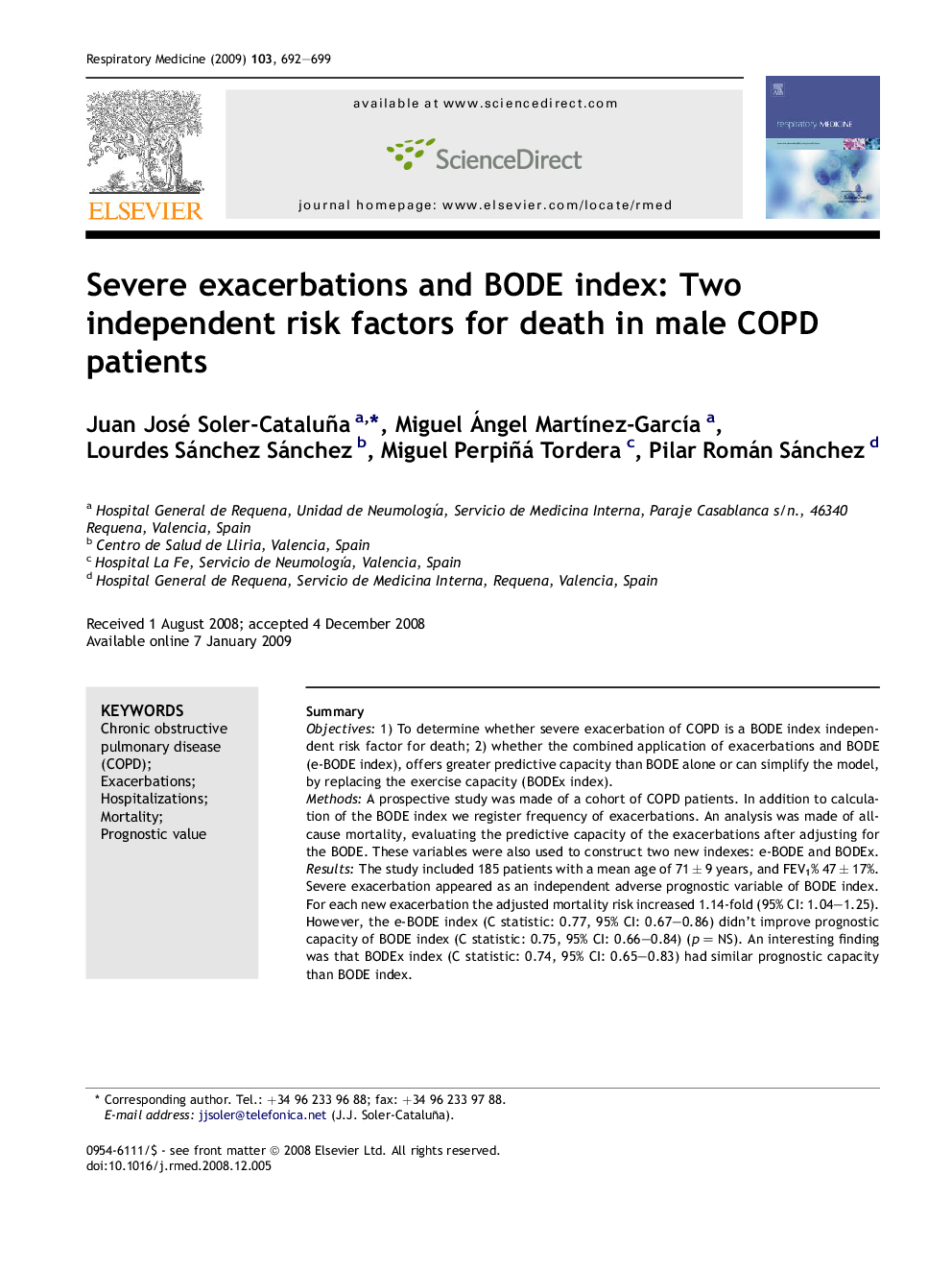| Article ID | Journal | Published Year | Pages | File Type |
|---|---|---|---|---|
| 4211474 | Respiratory Medicine | 2009 | 8 Pages |
SummaryObjectives1) To determine whether severe exacerbation of COPD is a BODE index independent risk factor for death; 2) whether the combined application of exacerbations and BODE (e-BODE index), offers greater predictive capacity than BODE alone or can simplify the model, by replacing the exercise capacity (BODEx index).MethodsA prospective study was made of a cohort of COPD patients. In addition to calculation of the BODE index we register frequency of exacerbations. An analysis was made of all-cause mortality, evaluating the predictive capacity of the exacerbations after adjusting for the BODE. These variables were also used to construct two new indexes: e-BODE and BODEx.ResultsThe study included 185 patients with a mean age of 71 ± 9 years, and FEV1% 47 ± 17%. Severe exacerbation appeared as an independent adverse prognostic variable of BODE index. For each new exacerbation the adjusted mortality risk increased 1.14-fold (95% CI: 1.04–1.25). However, the e-BODE index (C statistic: 0.77, 95% CI: 0.67–0.86) didn't improve prognostic capacity of BODE index (C statistic: 0.75, 95% CI: 0.66–0.84) (p = NS). An interesting finding was that BODEx index (C statistic: 0.74, 95% CI: 0.65–0.83) had similar prognostic capacity than BODE index.ConclusionsSevere exacerbations of COPD imply an increased mortality risk that is independent of baseline severity of the disease as measured by the BODE index. The combined application of both parameters (e-BODE index) didn't improve the predictive capacity, but on replacing exacerbation with exercise capacity the multidimensional grading system is simplified without loss of predictive capacity.
